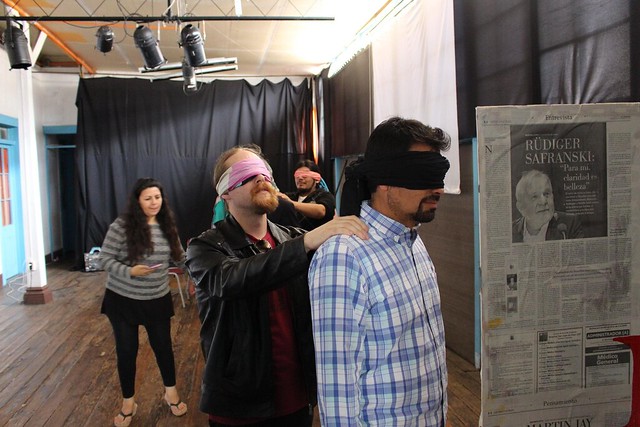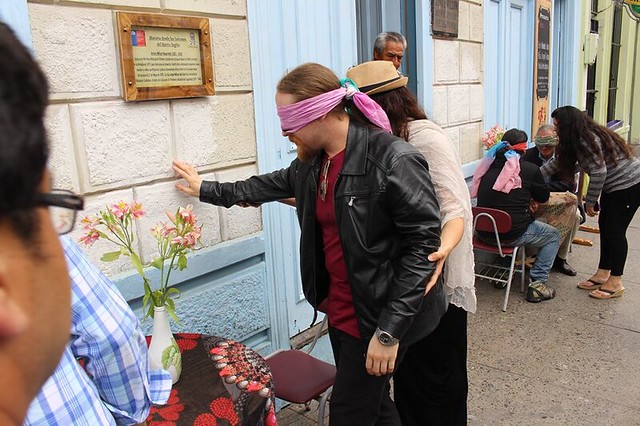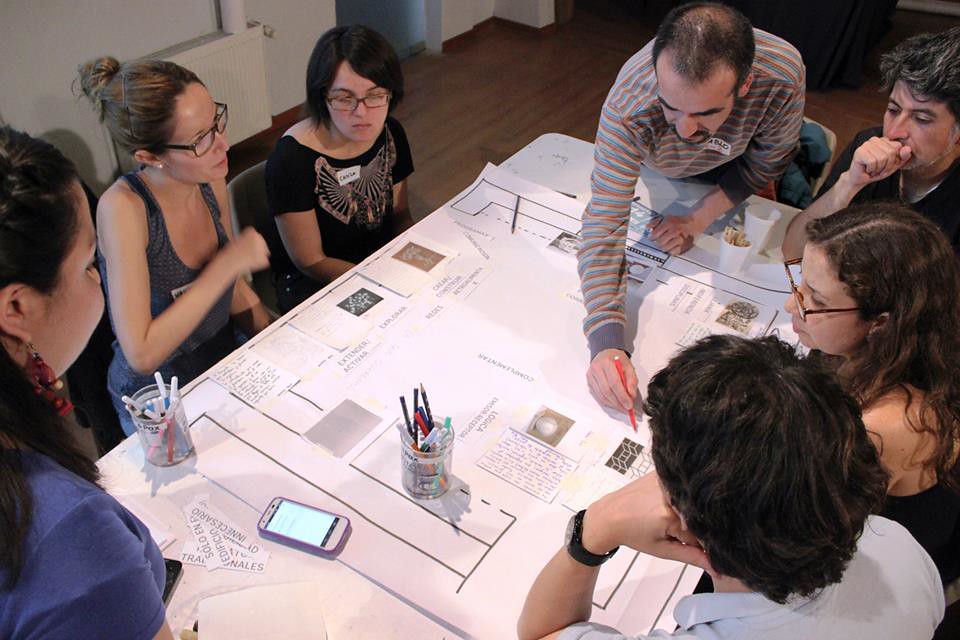As part of my research in artistic mediation practices, both in the context of my work at the Museo de la Solidaridad Salvador Allende (MSSA) and in alignment with the proposals of the Artistic Mediation Network, I had the opportunity to create experiences where artistic mediation practices evolved into creative and artistic endeavors.
INVISIBLE /2013
This project emerged within the framework of an event called “Memory Exercises,” held at MSSA from September 11th to 15th, 2013. It included a range of activities both within and outside the museum as part of the commemoration of the 40th anniversary of the Chilean coup d’état in 1973. The MSSA organized a special program for this occasion.
In my role within the mediation department, we aimed to leverage the exhibition by Chilean artist Juan Castillo, who was residing in Sweden. He had been a member of the Colectivo de Acción de Arte CADA, one of the most prominent groups that openly opposed the dictatorship in the 1980s. Our goal was to connect him with a group of high school students participating in a visual arts workshop at their school, known as Colectivo O.B.R.A, which was led and mentored by the art teacher Mildred Donoso.
Once the connection was established, we proposed five working sessions between the students and Juan Castillo, facilitated by the mediation team. The mission was to develop a collaborative artistic project that would shed light on and draw attention to some of the houses in the República neighborhood. These houses had been used by the National Intelligence Directorate (CNI) as detention and torture centers during the dictatorship. Their history had been obscured by the imposition of the “University District” in the 1990s and their subsequent designation as a “Typical Zone” in the same decade, which focused solely on the architectural characteristics of the mansions and their association with the late 19th and early 20th-century oligarchy.
Through mediation exercises, we introduced the themes of the military dictatorship in Chile and the challenges of constructing memory, particularly from the perspective of visual arts. We asked the OBRA students, aged between 14 and 18, to envision and visually represent their perceptions of the dictatorship period and the coup, considering both personal and collective emotional aspects. We also requested that they conduct interviews with individuals aged 35 and older to gather narratives. This enabled us to engage in a memory-building exercise using their images, which were connected through relationship maps, fostering reflection on historical themes, human rights issues, and the broader concept of memory.
With these themes on the table, Juan Castillo joined the project and led the collective creative process. Through discussions, a concrete project gradually took shape, ultimately resulting in an art action called “Invisible.”
OBRA members selected quotes from their interviews, combined them with the names of disappeared detainees and underage political victims, and printed them on adhesive stickers. These stickers were affixed by the students on September 10th along the sidewalks of Avenida República, between Gorbea and Gay streets.
“Invisible” was a contemporary, ephemeral, collective work of art and a kind of action-installation. It fully met the museum’s mission and sparked various reactions among the neighborhood residents and passersby. For example, during the sticker-pasting process on the streets, many people approached to share their stories, ask questions, and even called the police. On the evening of September 11th, the stickers affixed to one of the University Andrés Bello houses were quickly removed, while Liceo Cervantes borrowed the stickers to affix them to their facade as a protest gesture in the context of the “Pingüino Revolution” (student protests and takeovers in 2013).
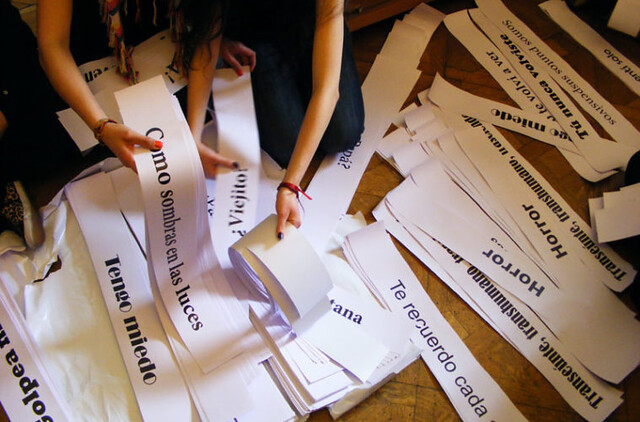
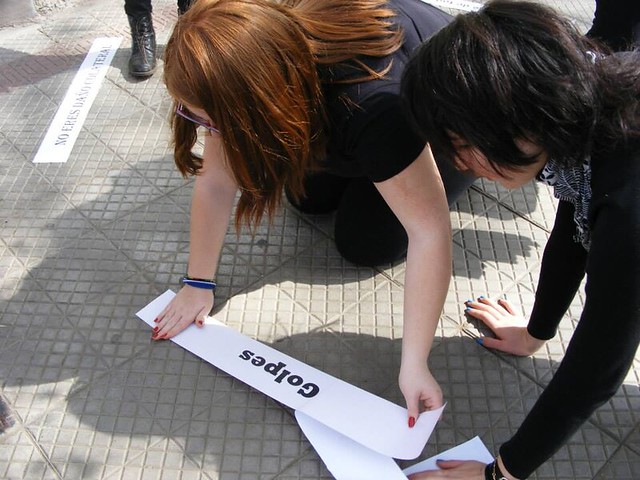
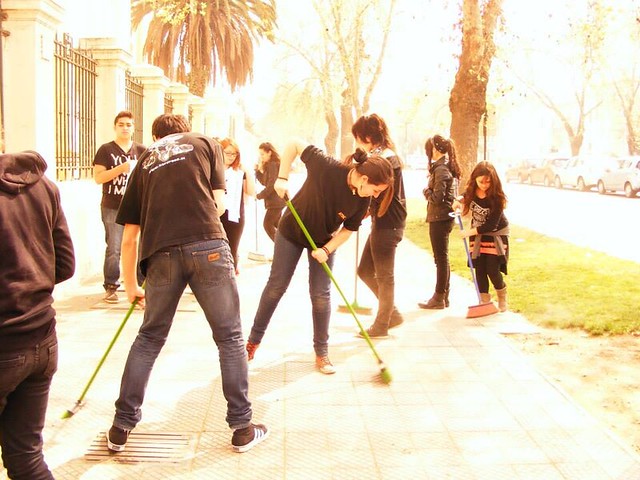

School-Education-Museum? An imperative question/ 2015
Inspired by the proposal of the 6th Mercosur Biennial, which, for the first time, introduced a Pedagogical Curatorship led by Uruguayan artist Luis Camnitzer, we initiated a Participatory Curatorship with a thematic focus on the role of education within the museum and its relationship with schools.
In this context, Participatory Curatorship is understood as the creation of exhibitions that are themselves conceived as educational endeavors. These exhibitions strive to incorporate the visitor’s perspective into the display, sharing artistic concepts with them and encouraging them to propose and engage with their own interpretations and recontextualizations within the exhibition itself.
This curatorial project was conceived as an exploration of the educational role inherent in both museum and school institutions, within the context of the ongoing educational crisis that Chile has been facing. This crisis gained prominence during the waves of social mobilization that began with the “Pingüino Revolution” in 2006 and has persisted as a consistent force to the present day.
As a result, we believe it is crucial to position the museum as a platform for reflection and discussion regarding the historical understanding of education and its potential for transformation. We extended invitations to key stakeholders directly involved in these institutions, including students, teachers, school principals, and coordinators, as well as education professionals from other museums and museum directors.
This project encompassed a range of actions and activities, including a curatorial design workshop where a group of individuals selected artworks from the collection, reinterpreted them, and arranged them within the exhibition space. Building upon their contributions, the final exhibition was realized. The mediation team, in collaboration with the designer Rodrigo Dueñas and Ramón Meza, the technician responsible for installations, introduced various visual elements that facilitated visitor engagement and participation within the exhibition.
There are several details about this work, but I’m sharing a brief video clip in which a past Alma, who was very pregnant, explains the process. Additionally, there is a document with the details and a photo album of the exhibition.
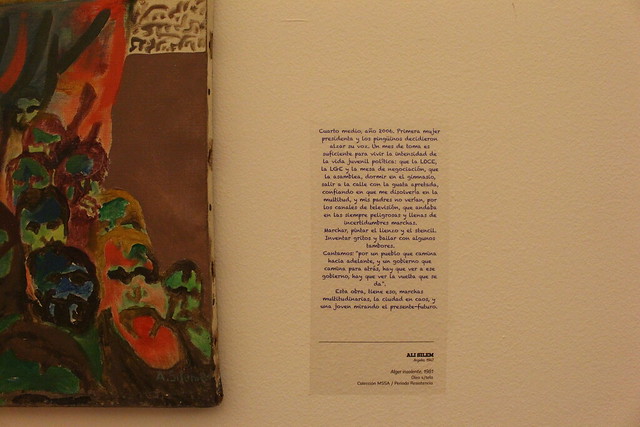
Blind Date /2016
As the concluding activity of the Confluencias event in the city of Coquimbo, where we, in collaboration with the Artistic Mediation Network, independently organized two days of work with local artists and cultural managers, we formulated a proposal for action and intervention in public space. The aim was to establish a platform for dialogue and interaction between two strangers, centered on inquiries about their connection to the arts and cultural venues.
This collective creative endeavor was inspired by the reflections around the artistic mediation in the local community, recognizing the substantial demand for spaces of connection.
